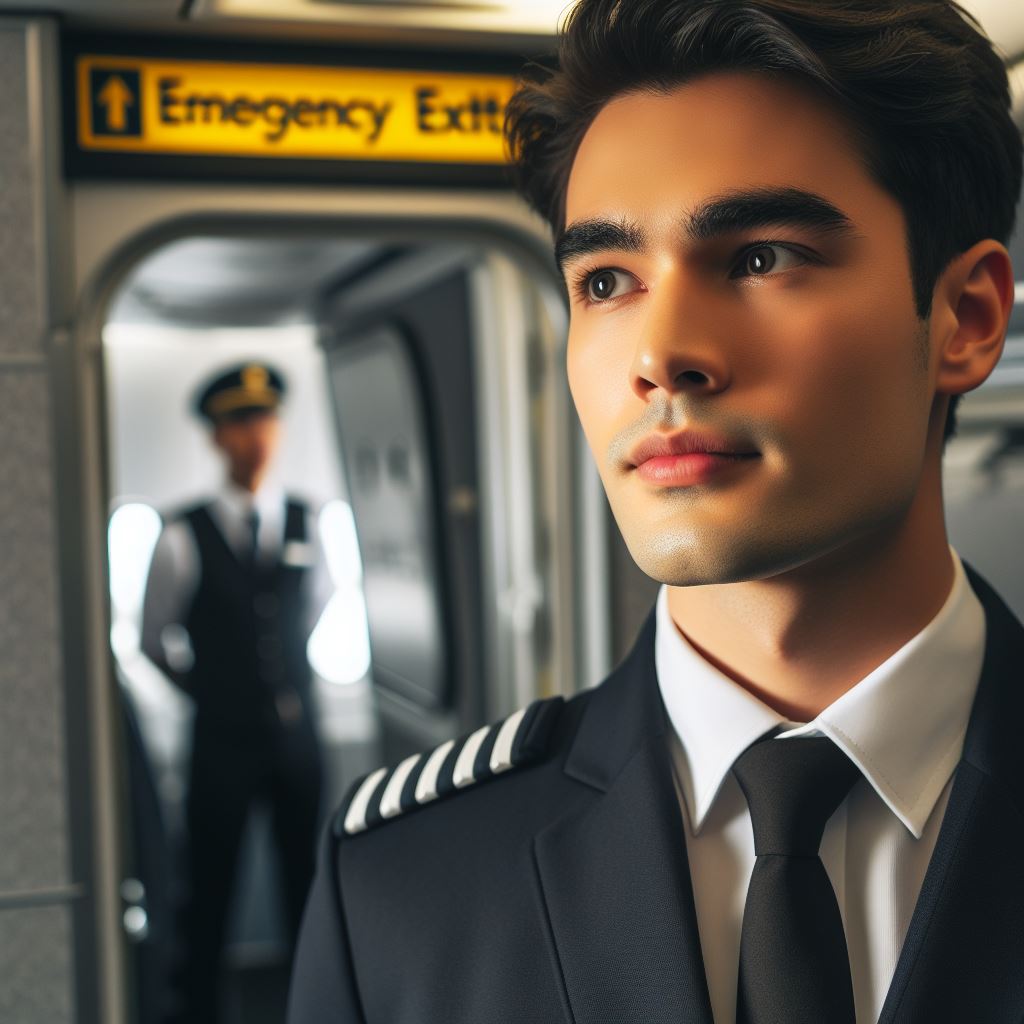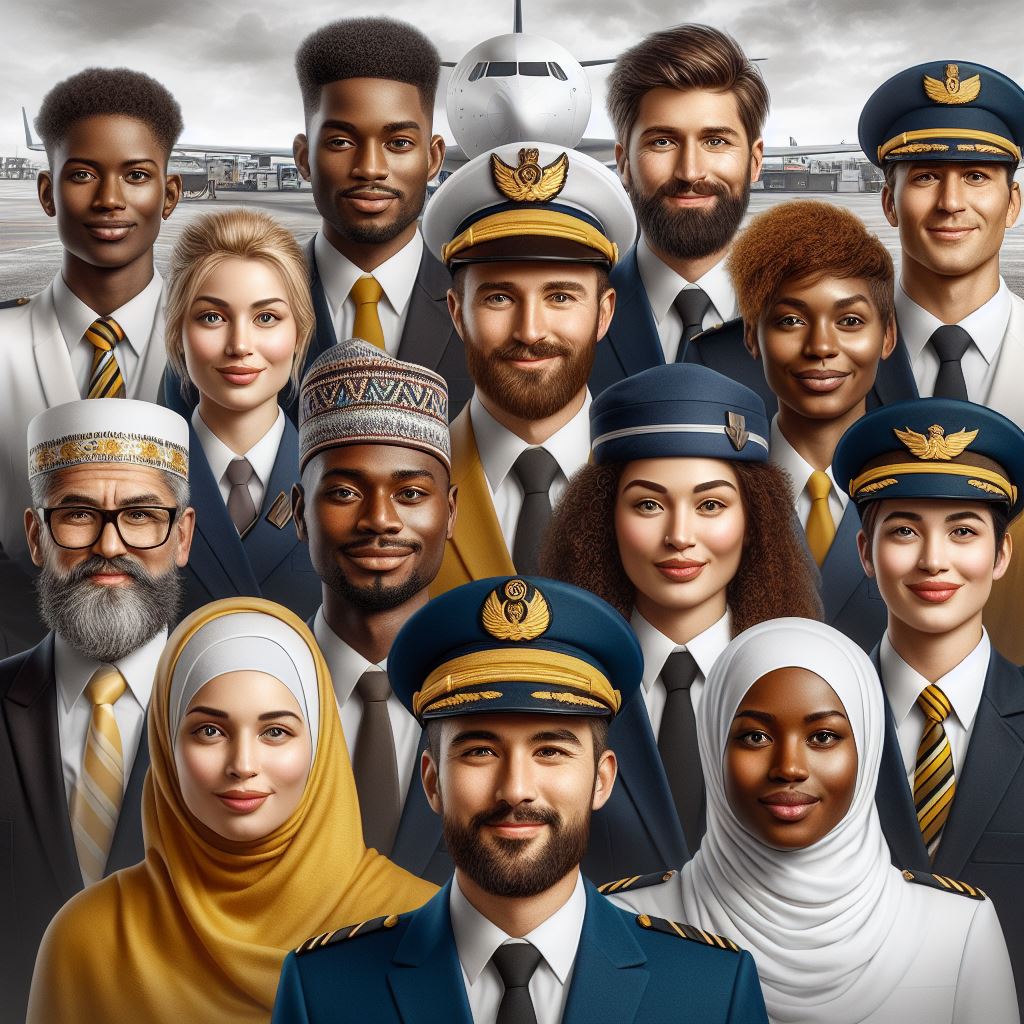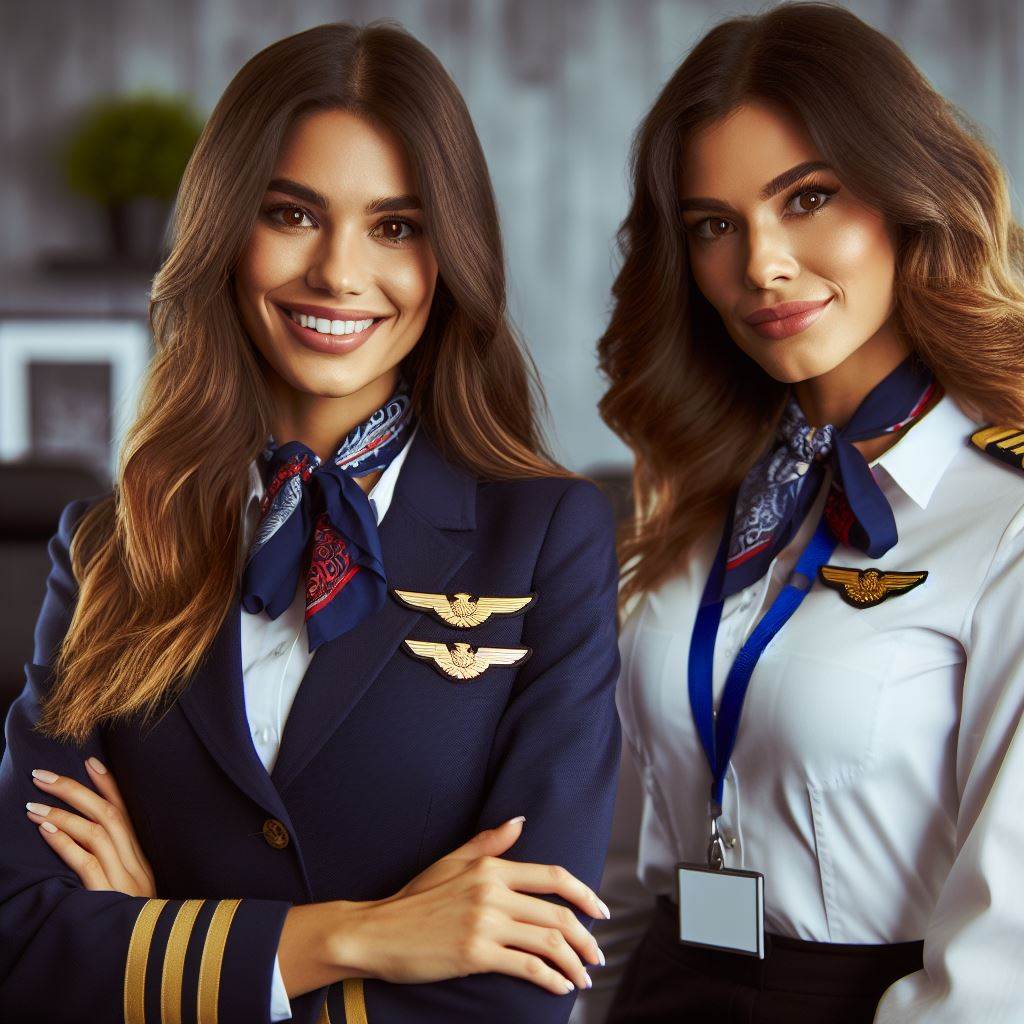Introduction
Emergency training for New Zealand cabin crew is a critical aspect of their occupation.
This training is vital for ensuring the safety of passengers throughout their journey.
Cabin crew play a pivotal role in emergency situations, being the first responders on board.
Being prepared for emergencies is of utmost importance for cabin crew members.
They undergo thorough training to effectively handle various situations, such as fires, medical emergencies, and evacuations.
This training equips them with the necessary skills and knowledge to react swiftly and appropriately, minimizing risks and ensuring passenger safety.
The well-being of passengers is the primary concern for cabin crew during emergencies.
They are responsible for maintaining calm and assisting passengers in a prompt and efficient manner.
Their training covers procedures for evacuating an aircraft, operating emergency equipment, and providing first aid.
By following these protocols, cabin crew actively contribute to mitigating the impact of emergencies on board.
Cabin crew members act as a liaison between the passengers and the flight crew during emergencies.
They communicate with the cockpit, relaying critical information and updates.
Their ability to assess situations and effectively relay information is crucial for making informed decisions that prioritize passenger safety.
In essence, emergency training for New Zealand cabin crew is essential for maintaining passenger safety.
Through their training, cabin crew are well-prepared to handle a range of emergency situations, ensuring the well-being of passengers throughout their journey.
Personalized Career Consulting
Unlock your potential with expert career advice tailored to your goals. Get personalized guidance and actionable steps toward your dream career in New Zealand.
Get StartedThey play a vital role in emergency response, acting as first responders and facilitating effective communication between passengers and the flight crew.
Overview of Emergency Training Requirements
A. Regulatory requirements for emergency training in New Zealand
In New Zealand, cabin crew members are mandated to undergo rigorous emergency training programs.
These programs are regulated by the Civil Aviation Authority (CAA), ensuring that the cabin crew is prepared to handle any emergency situation that may arise during a flight.
B. Specific training programs and certifications required for cabin crew members
To become certified cabin crew members in New Zealand, individuals must complete comprehensive emergency training programs.
These programs cover a wide range of topics including emergency procedures, first aid, firefighting, and evacuation techniques.
Cabin crew members are trained to swiftly and effectively respond to various emergencies such as medical emergencies, turbulence incidents, and potential security threats.
C. Recent updates or changes in training requirements
In recent years, the aviation industry has witnessed various updates and changes in emergency training requirements for cabin crew members in New Zealand.
These changes are a result of continuous efforts to enhance passenger safety and improve emergency response capabilities.
One notable update has been the integration of scenario-based training, where cabin crew members simulate emergency situations to better prepare themselves for real-life events.
This approach helps to strengthen their decision-making skills and ability to work under pressure.
D. Importance of continuous training and certifications
Emergency training for cabin crew members is an ongoing process.
Regular refreshers and re-certifications are necessary to ensure that cabin crew members remain up to date with the latest emergency procedures and techniques.
The aviation industry constantly evolves, and it is vital for cabin crew members to stay well-informed and adequately trained to handle any unforeseen circumstances that may arise during flights.
E. Collaborative training with other stakeholders
Emergency training programs in New Zealand often involve collaboration between various stakeholders, including airlines, regulatory bodies, and training institutions.
Transform Your Career with a Professional CV and Cover Letter
Stand out to employers with an ATS-optimized resume and tailored cover letter designed to match your dream role. Let us craft your job application materials for success!
Get StartedThis collaborative approach ensures that the training provided to cabin crew members aligns with industry standards and best practices.
By working together, these stakeholders enhance the effectiveness and relevance of emergency training programs.
Emergency training for cabin crew members in New Zealand is a crucial aspect of ensuring passenger safety during flights.
The regulatory requirements set by the Civil Aviation Authority, along with comprehensive training programs, equip cabin crew members with the necessary skills and knowledge to handle emergency situations efficiently.
Continuous training and certifications, along with collaborative efforts among stakeholders, contribute to the ongoing improvement of emergency response capabilities within the aviation industry.
Read: Work-Life Balance in NZ Skies
Training Modules Covered in Emergency Training
In order to ensure the safety and well-being of both cabin crew and passengers, emergency training is an essential aspect of every flight attendant’s training.
During this training, cabin crew members are equipped with the necessary skills and knowledge to effectively handle various emergency situations that may arise onboard an aircraft.
A. Overview of Various Modules Included
Emergency training consists of several modules that cover different aspects of emergency procedures, communication, and passenger management.
Each module plays a crucial role in preparing cabin crew members for potential emergencies.
The following is an overview of the different modules covered in emergency training:
- Emergency procedures
- Communication
- Passenger management
- Firefighting
- Evacuation
- First aid
B. Theoretical Aspects Covered
Theoretical knowledge forms the foundation of cabin crew members’ emergency training.
It includes understanding emergency procedures, communication protocols, and effective passenger management.
During emergency procedures training, crew members learn about the different types of emergencies that may occur onboard, such as medical emergencies, fire incidents, or emergency landings.
Boost Your Career with a Standout LinkedIn Profile
Attract recruiters and expand your network with a fully optimized LinkedIn profile tailored to highlight your strengths and professional goals. Let your profile open doors to new opportunities!
Get OptimizedThey are taught how to identify and respond promptly to these situations.
Communication training teaches cabin crew members how to effectively communicate with passengers and with fellow crew members during emergency situations.
They learn how to provide clear instructions, reassure passengers, and maintain calmness in order to minimize panic.
Additionally, the theoretical training covers passenger management, which focuses on handling passengers who may be anxious, distressed, or in need of assistance during an emergency.
Crew members learn techniques to maintain control and ensure the safety of both passengers and themselves.
C. Practical Training Sessions
Alongside theoretical knowledge, practical training sessions are a crucial part of emergency training for cabin crew members.
These sessions give them hands-on experience in dealing with emergency situations.
Simulated emergency evacuations are a key component of practical training.
Cabin crew members participate in mock evacuation drills, which involve evacuating an aircraft under various emergency scenarios.
This training helps them understand the protocols and procedures involved in evacuating passengers quickly and safely.
Firefighting exercises are another important practical training session.
Crew members learn how to handle fire incidents onboard an aircraft, including the use of fire extinguishers and emergency firefighting equipment.
Mock first aid scenarios are conducted to prepare cabin crew members to handle medical emergencies.
They learn different first aid techniques, including CPR, responding to allergic reactions, and managing injuries.
Overall, the combination of theoretical knowledge and practical training equips cabin crew members with the skills and confidence to effectively handle emergency situations.
It ensures the safety of both the crew and passengers, giving everyone peace of mind when flying.
Read: NZ Flight Attendant Uniforms Unveiled

Importance of Teamwork and Communication
In the high-pressure environment of an emergency situation, effective teamwork and communication are crucial for the New Zealand cabin crew to ensure the safety and well-being of their passengers.
The significance of these two elements cannot be overstated.
A. Significance of Effective Teamwork in Emergency Situations
When facing an emergency, the cabin crew must work together as a team, cooperating and supporting one another in order to swiftly and efficiently handle the situation.
Each member has a specific role and responsibilities, and it is through teamwork that they can effectively fulfill these duties.
For example, in the event of an evacuation, cabin crew members need to assist passengers, ensure their orderly exit from the aircraft, and maintain calmness in a potentially chaotic environment.
By collaborating and synchronizing their efforts, they can ensure that everyone safely reaches the designated exit points.
B. Role of Clear Communication Among Cabin Crew Members and with the Flight Deck
Clear communication is vital for the cabin crew as they coordinate their actions and share critical information in emergency scenarios.
Effective communication allows them to relay important instructions, updates, and any changes in the situation.
Within the cabin crew, open lines of communication enable them to keep each other informed, ask for assistance if needed, and ensure that everyone is on the same page.
By communicating clearly, they can avoid misunderstandings and respond efficiently to the fast-paced and unpredictable nature of emergencies.
Furthermore, proper communication with the flight deck is essential.
The cabin crew must relay pertinent information about the situation, such as the number and condition of passengers, potential hazards, or any specific instructions from the captain.
This enables the flight deck to make informed decisions that will contribute to the overall safety of the aircraft and its occupants.
C. Examples of How Proper Teamwork and Communication Have Saved Lives in Real-Life Emergency Situations
Real-life emergency situations have demonstrated time and time again how teamwork and communication directly contribute to saving lives.
One such example is the “Miracle on the Hudson” in 2009.
When US Airways Flight 1549 was forced to make an emergency landing on the Hudson River, the cabin crew worked together seamlessly.
Their effective teamwork ensured the swift evacuation of all passengers, preventing casualties despite the extreme circumstances.
In another incident, the United Airlines Flight 232 crash-landing in 1989, the flight attendants’ clear communication with the flight deck allowed for crucial decision-making, ultimately leading to successful evacuation and the survival of a significant number of passengers.
These real-life examples highlight the importance of teamwork and communication in emergencies.
They demonstrate that when cabin crew members are united in purpose and communicate effectively, even the most challenging situations can be managed and lives can be saved.
In fact, teamwork and communication are essential aspects of emergency training for New Zealand cabin crew.
Through effective teamwork, the crew can successfully handle emergency situations.
Clear communication enables them to coordinate actions and relay vital information, helping to ensure the safety of passengers and crew members alike.
Real-life incidents validate the significance of teamwork and communication in saving lives during emergencies.
Read: Handling Jet Lag: Tips for NZ Crews
Stress Management and Psychological Support
A. Psychological challenges faced by cabin crew during emergencies
Emergencies can be highly stressful situations for cabin crew members, requiring them to remain calm and deal with various challenges.
Throughout their training, cabin crew learn techniques to manage stress and receive psychological support to cope with the demands of their job.
When it comes to emergencies, cabin crew face unique psychological challenges.
They must handle the safety and well-being of passengers while managing their own fears and anxieties.
This can be especially challenging as cabin crew are responsible for following strict protocols and ensuring the safety of everyone on board.
B. How emergency training helps cabin crew manage stress and stay calm
Emergency training plays a crucial role in helping cabin crew manage stress during critical situations.
By providing realistic simulations and scenarios, training programs enable crew members to develop the necessary skills and confidence to handle emergencies effectively.
The training focuses on enhancing communication, teamwork, and decision-making abilities, empowering cabin crew to stay calm and reassured during high-pressure situations.
C. Additional psychological support or resources provided to cabin crew members
In addition to the technical training, psychological support is offered to cabin crew to address the emotional impact of emergencies.
Recognizing the potential psychological toll, airlines provide resources such as counseling services, peer support networks, and debrief sessions after traumatic incidents.
One important aspect of psychological support is promoting self-care and well-being among cabin crew members.
They are encouraged to prioritize their mental health and engage in activities that help them manage stress, such as regular exercise, relaxation techniques, and pursuing hobbies outside of work.
Furthermore, airlines may offer specialized programs to equip cabin crew with psychological coping mechanisms.
These programs focus on building resilience, enhancing emotional intelligence, and developing techniques to foster a positive mindset during emergencies.
Technology also plays a role in providing psychological support to cabin crew.
Some airlines have developed mobile applications or online platforms that offer resources for stress management, meditation exercises, and access to mental health professionals.
These resources are easily accessible and can help cabin crew members in times of distress.
Moreover, during emergencies, cabin crew have access to on-board support systems and protocols to aid them in psychological management.
They are trained to lean on their colleagues for support and harmony, creating a sense of unity and teamwork.
This collaborative approach helps cabin crew members stay focused and maintain a calm demeanor, which is essential for effective crisis management.
In short, emergency training for cabin crew not only focuses on the technical aspects of managing crises but also addresses the psychological challenges they face.
By providing stress management techniques, psychological support resources, and promoting self-care, airlines ensure that their cabin crew members are equipped to handle emergencies while maintaining their mental well-being and professionalism.
Read: Flight Attendant FAQs: New Zealand Focus
Ongoing Training and Refresher Courses
A. Importance of continuous training and refreshers for cabin crew members
Cabin crew members play a critical role in ensuring the safety and well-being of airline passengers.
As such, it is imperative that they receive ongoing training and refresher courses to keep their emergency response skills sharp and up-to-date.
Continuous training and refreshers are vital for cabin crew members because emergencies and safety protocols are constantly evolving.
By staying current with the latest industry standards and best practices, cabin crew can effectively respond to any unforeseen situations that may arise onboard.
B. How often emergency training needs to be renewed or refreshed
Emergency training needs to be renewed or refreshed on a regular basis.
Each airline has its own specific requirements regarding the frequency of this training, but it typically occurs annually or biennially.
This ensures that cabin crew members remain competent in handling emergencies and are knowledgeable about any updates or changes in safety procedures.
Moreover, the aviation industry prioritizes ongoing training to address evolving security threats and technological advancements.
Cabin crew members receive specialized training in areas such as passenger evacuation, first aid, fire safety, and communication during emergencies.
This comprehensive training equips them with the necessary skills to handle various scenarios effectively.
C. Opportunities for cabin crew to further enhance their emergency response skills
Besides the regular training provided by airlines, cabin crew members also have opportunities to further enhance their emergency response skills through additional courses and certifications.
These supplementary programs allow them to expand their knowledge and expertise in areas such as advanced first aid, crisis management, and conflict resolution.
Some airlines offer specialized training courses in collaboration with external organizations or institutions.
These courses provide cabin crew members with an opportunity to receive in-depth training in specific areas, such as handling medical emergencies or responding to terrorist threats.
Such additional training not only enhances their skills but also boosts their confidence in dealing with emergency situations.
Furthermore, cabin crew members can attend industry conferences, workshops, and seminars to stay updated on the latest trends and developments in emergency response.
These events provide a platform for sharing experiences and knowledge with industry experts from around the world.
By participating in such professional development opportunities, cabin crew members can continuously enhance their emergency response skills.
In a nutshell, ongoing training and refresher courses are of utmost importance for cabin crew members.
Regular renewal of emergency training ensures that they remain well-prepared and capable of handling any emergency situations that may arise during flights.
Additionally, supplementary training opportunities enable cabin crew to expand their skills and knowledge, ultimately enhancing the safety and security of airline passengers.
Conclusion
In the fast-paced world of aviation, emergency training for New Zealand cabin crew is not just a requirement but a crucial aspect of their profession.
Let’s recap why this training is so important:
- Safety is paramount: Cabin crew members are the first line of defense in emergencies, ensuring the safety and well-being of passengers.
- Quick thinking saves lives: Training prepares them to handle various scenarios, from medical emergencies to evacuations, with calm and efficiency.
- Communication is key: They learn how to communicate effectively with passengers and crew during emergencies, maintaining order and providing reassurance.
- Professionalism under pressure: Cabin crew are trained to remain composed and make split-second decisions, even in the most challenging situations.
In the end, emergency training is not just a box to tick—it’s a lifeline.
Next time you fly, take a moment to appreciate the dedication and professionalism of your cabin crew.
Their training and readiness ensure that you are in safe hands, no matter what may arise during your journey.




